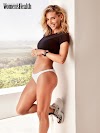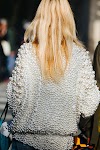
FANTASYLAND
Along with Main Street USA, Fantasyland was probably the one area that was closest to Walt Disney’s heart. This is where he could bring his cartoons to life. He wanted to immerse his guests in the range of emotions that one would feel while watching one of his films. As you ride through the attractions you experience fantasy (Peter Pan’s Flight), humor (Mr. Toad’s Wild Ride), and drama (Snow White’s Scary Adventures).
It begins with Sleeping Beauty Castle. Your first view of the castle is framed by the buildings along Main Street, which makes the structure more imposing and grander than it really is. The castle is also an excellent example of forced perspective, which is a visual tool used in making movies. Within Disneyland, forced perspective is used to make the buildings feel taller than they really are while making the environment more comfortable and intimate. The buildings are not full-scale reproductions of historic structures. Instead the perspective is forced because the first floor of a building is full scale, the second floor is smaller in scale, and the third level is even smaller. As the structure continues to rise, the materials continue to get smaller in scale. This visual trick is the reason why an adult has the sensation of returning to someplace from your childhood when everything looks smaller.
The castle is one of the few four sided structures in the park. Most buildings are what are known as a ‘decorated shed’ with a themed façade hiding an ordinary industrial building. The castle is a blend of Bavarian and French influences with a bit of King Ludwig II of Bavaria’s Neuschwanstein Castle thrown in. Walt was about to review the model and at the last minute, Imagineer Herb Ryman looked at the model and felt that something wasn’t right. So to the horror of his colleagues he took off the top and flipped it around. Walt walked in and loved it.
When Disneyland was first built, budget considerations forced many compromises. Fantasyland was not what Walt originally wanted but it was all he could afford. To remind his Imagineers of what he really had in mind, he had many of the building facades reproduced in miniature and placed along the banks of the Storybook Canal Boats.
The original Fantasyland sported Eyvind Earle-inspired tournament style facades. In 1983, the area got a major overhaul. In the updated version, much of the architecture in the courtyard is based on the work of children’s illustrator Gustaf Tenggren. Each of the facades represent the countries where the stories originated. Snow White lives in a Gothic Bavarian castle, Peter Pan flies through a timbered Tudor style setting, Mr. Toad careens through an English countryside manor, and Pinocchio’s village is a chalet that was meant to compliment the former Swiss chalet style Skyway platform that is rotting away amongst the trees near the path that leads to Frontierland.
The redesign of Fantasyland also solved another major problem. Congestion. Before 1983, the carrousel was jammed up against the castle, the Mad Tea Party was directly behind, and the /Storybook Canal Boats combo defined the backside of Fantasyland. The attractions were shifted around and a new, small Alice in Wonderland mini-land was created.
Fantasyland continues to the north toward the beautiful, iconic façade of it’s a small world. This was a collaboration between the brilliant Mary Blair and Imagineer Rolly Crump. Crump said of Blair, “It was about children, the freedom of color, and that Walt had asked her to do it.”
On the way to Tomorrowland you pass through Matterhorn Way, which combines heavy timber benches, Pine and Aspen trees, and Swiss Chalet architecture to create an immersive environment reminiscent of the village of Zermatt, Switzerland.





0 Yorumlar